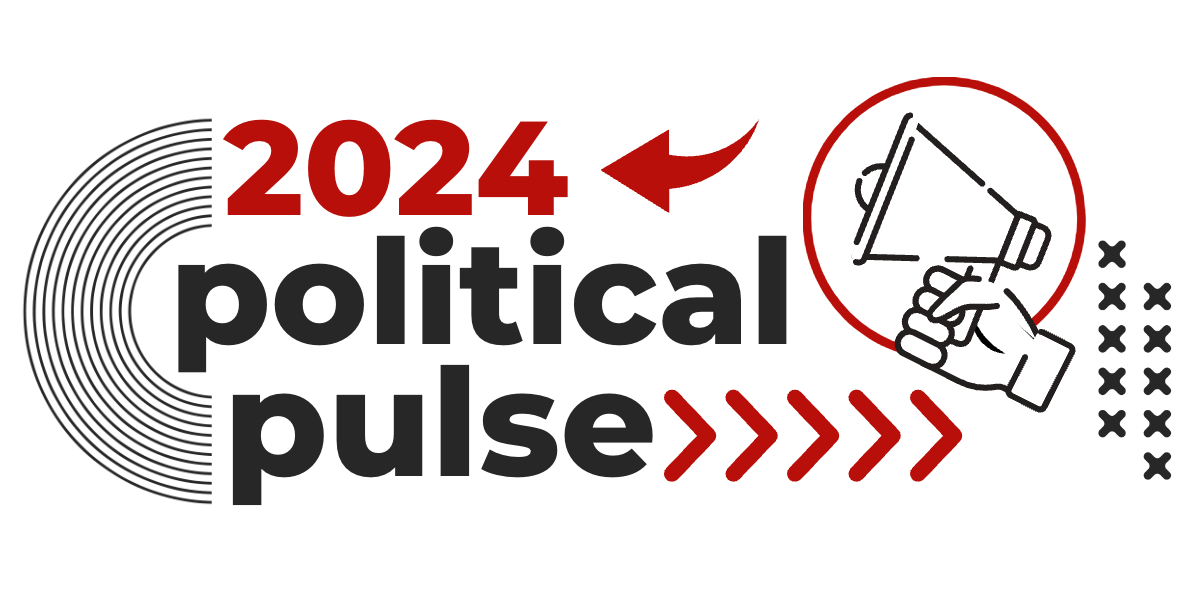DATA POINTS
- 7%: The projected increase of median health care costs for corporate employers in 2024
- 12%: The percentage of homes that sell for a loss in San Francisco
- 16%: The increase percentage in COVID hospitalizations
- 56%: The percent of Republican primary voters who said they would “definitely” vote for Trump
- 423: The days until the 2024 presidential election
- $39 Billion: The amount mortgage holders withdrew in the second quarter
 The 2024 Fight for the Senate
The 2024 Fight for the Senate
While most eyes focus on the 2024 Presidential primaries, the hair-thin Senate majority is creating big expectations for both parties to perform in Senate races. This week, Michigan’s open Senate race became the contest to watch when Mike Rogers, a moderate Republican heavyweight and former Chair of the House Intelligence Committee after the 9/11 attacks, raised his hand to represent the Mitten State. The Republican Party has struggled in Michigan for years. Michigan hasn’t elected a GOP Senator since 1994, suffered state losses to the Democrats times over, and, although former President Trump won the state in 2016, he lost it in 2020.
The GOP is excited by Rogers’ experience and electability, and top Democrats are rallying behind Representative Elissa Slotkin. If Rogers can take the lead of the GOP pack and defeat the expected Democrat frontrunner Slotkin in 2024, Republicans will only need to overturn one other Senate seat to take control of the upper chamber.
But the plan to win the Senate only works if the GOP can hold onto the seats they already secured. In Tennessee this week, Democratic State Representative Gloria Johnson, one of the gun control advocates in the “Tennessee Three,” announced her bid to run against Republican Senator Marsha Blackburn. Like Michigan Republicans, Tennessee has not elected a Democrat to the U.S. Senate since 1995.
While the Presidential primary season warms up, don’t miss the political drama heating up in Senate races across the country.
The Graveyard of Pandemic Aid Grows
More COVID spending is ending, and many Americans are feeling the pressure. At the end of September, between 8 and 24 million people could lose Medicaid healthcare coverage as the sun sets on a COVID-era federal funding program that has kept childcare centers open. This may result in states panicking to keep 3.2 million children covered in the 70,000 facilities that could close. The lack of funding could lead to 232,000 job losses in the childcare sector. The Special Supplemental Nutrition Program for Women, Infants, and Children (WIC), which serves about half of all infants born in the U.S., is also facing significant cuts.
This is all happening as American credit card debt rose above $1 trillion with an average rate of 20.6% for the first time in history. Student loans began accruing interest on September 1 and borrowers will begin repayment plans on October 1. The Biden Administration is searching for additional program funding, but the stamp of approval must come from a divided Congress.
Read More at The Washington Post
Time to Put in that PTO

Pack your bags now; these prices won’t last forever. Ticket price volatility has many factors, including demand, jet fuel prices, pilot shortages, employee pay negotiations, and inflation. Business travel is still low but travel to visit family and friends or take that much-needed vacation is on the rise.
Buying airline tickets can still be a time sink; save yourself precious moments by getting all the top stories right here at The Weekender.
Read More at The Wall Street Journal
The Blue Shortage

Across the country, police departments are struggling to fill the workforce. While shrinking departments have been a problem since the early ‘70s, nothing has compared to the drop since 2020. While new applicants are scarce, officer resignations are up 47% compared to 2019.
Although the exodus of men and women in blue has its own unique causes, many other public service sectors continue to experience worker shortages. Schools nationwide are struggling to hire teachers, 91% of nurses believe the nursing shortage is getting worse, and the Accommodation and Food Services industry is seeing its highest quit rate since July 2021.
The aging workforce has a big hand to play in the shortage. The percentage of Americans aged 55 and over has doubled over the past 50 years, and while retirement is normally planned after due consideration, COVID caused many to retire prematurely and not re-enter the workforce.
How do we resolve this problem? Many point to immigration as a remedy to bolstering the workforce. Others call for universal childcare to ensure more people can work. Some call for wage growth to entice more able-aged workers to work sites.
Read More at the Associated Press
Short the Recession

It also appears as though the Federal Reserve is done raising interest rates. While this is good news for people planning to open a small business or lease a car, high credit card rates mean consumers will continue to reel by paying more on debt.
The Fed’s goal is to achieve a well-maneuvered “soft landing,” where it reduces inflation without pushing the U.S. economy into a recession. Economists and analysts alike believe the strong economy can handle the current interest rates. The next decision for the Fed is to determine their next steps on raising interest rates by either pausing (indefinitely keeping) or skipping (raising later in the year) changes.
An American Tradition: From Farm to Fair

State Fairs do far more than provide a great place to foster children’s imaginations – they reel in significant economic benefits as well. Nebraska’s State Fair brings up to 300,000 people to Grand Island and many area hotels receive 75% of their property’s revenue from fair travel. Illinois’ State Fair boosts Springfield’s economy with millions of dollars in revenue annually. Oklahoma brought in nearly $104 million directly from the fair last year as 900,000 people flocked to Oklahoma City. State Fairs conclude the summer by celebrating of the things that make America great.
Read More at The Washington Post
INTERNATIONAL SPOTLIGHT
Russia Forced to Negotiate for War Support
The dictatorial leader of North Korea Kim Jong-un will travel to Russia to meet with President Vladimir Putin this month, and Ukraine has every reason to be wary. The two leaders will discuss a partnership where North Korea will supply additional weapons and munitions to support Russia’s aggression in Eastern Europe. It is rare for Kim to leave North Korea, but he will embark on an armored train to the coastal Russian city of Vladivostok, which is adjacent to North Korea’s northern border. U.S. National Security Advisor Jake Sullivan said negotiations between the two leaders are “actively advancing.” Meanwhile, the U.S. has warned North Korea not to supply Russia with weapons.
Putin hopes Kim will send artillery shells and antitank missiles in return for Russia sharing its advanced technology for satellites and nuclear-powered submarines. Kim also seeks food aid for his impoverished and oft-starved nation. The meeting demonstrates that Russia is becoming increasingly desperate to secure the resources it needs to continue its Ukrainian offense, an indication that international sanctions against the country have been paying off. Both Russia and Ukraine are exhausting incredible amounts of ammunition in the war, but there’s a stark difference between the two efforts. Where Ukraine’s allies in the West have supplied it with ample resources to continue its defense, Russia is largely isolated in its fight and has been forced to turn to loose alliances like North Korea.
Read More at The New York Times
FEATURED TWEET




 The 2024 Fight for the Senate
The 2024 Fight for the Senate


